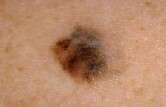Researchers estimate number of nevi biopsied in US children

(HealthDay)—During 2009 through 2013, there were an estimated 2,007,423 biopsies of nevi among children in the United States, according to a research letter published online Dec. 10 in JAMA Dermatology.
Susan A. Oliveria, Sc.D., M.P.H., from the Memorial Sloan Kettering Cancer Center in New York City, and colleagues estimated the number of nevi biopsied in children and adolescents in the United States. Data were obtained from a regional private dermatopathology database from 2009 to 2013, and from a commercial health insurance administrative claims database (the HealthCore Integrated Research Database [HIRD]).
The researchers identified 18,601 surgical specimens in the dermatopathology database from 2009 to 2013, of which 0.09 percent were melanomas, 58.1 percent nevi, and 41.9 percent all other diagnoses. The overall number needed to biopsy to detect one melanoma was 676. During the five-year period, 133,431 biopsies were identified in HIRD, with an estimated 136 melanomas; the number needed to biopsy was 982. Overall, during 2009 through 2013, there were an estimated 2,007,423 biopsies of nevi among individuals aged 19 years and younger; of these 1,940 were melanomas, and the number needed to biopsy was 1,035.
"Understanding the normal evolution of nevi during childhood and adolescence, as well as development of novel noninvasive diagnostic tools, is important in helping to reduce unnecessary biopsies, health care costs, and morbidity in this age group," the authors write.
More information: Full Text (subscription or payment may be required)
Copyright © 2014 HealthDay. All rights reserved.

















